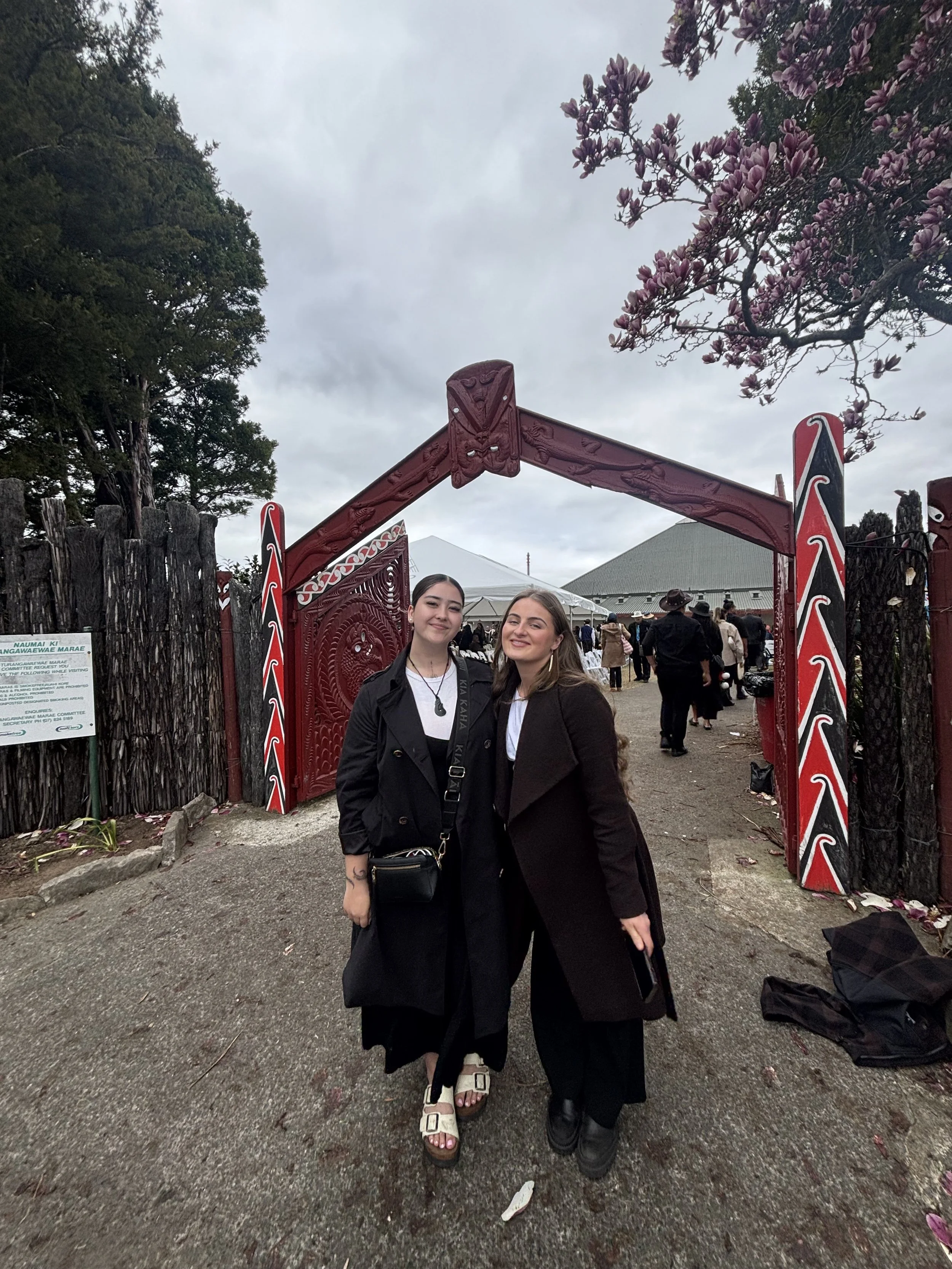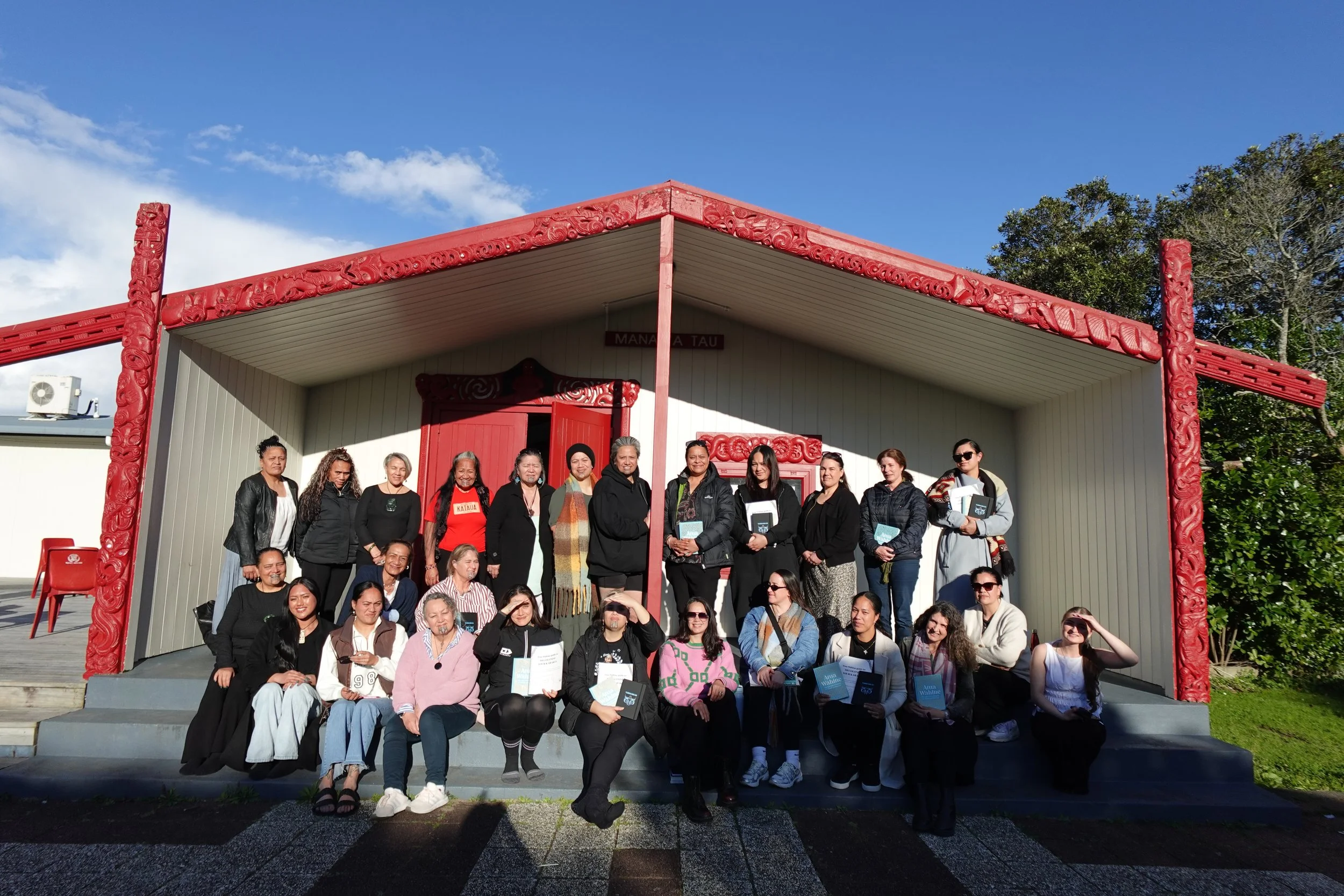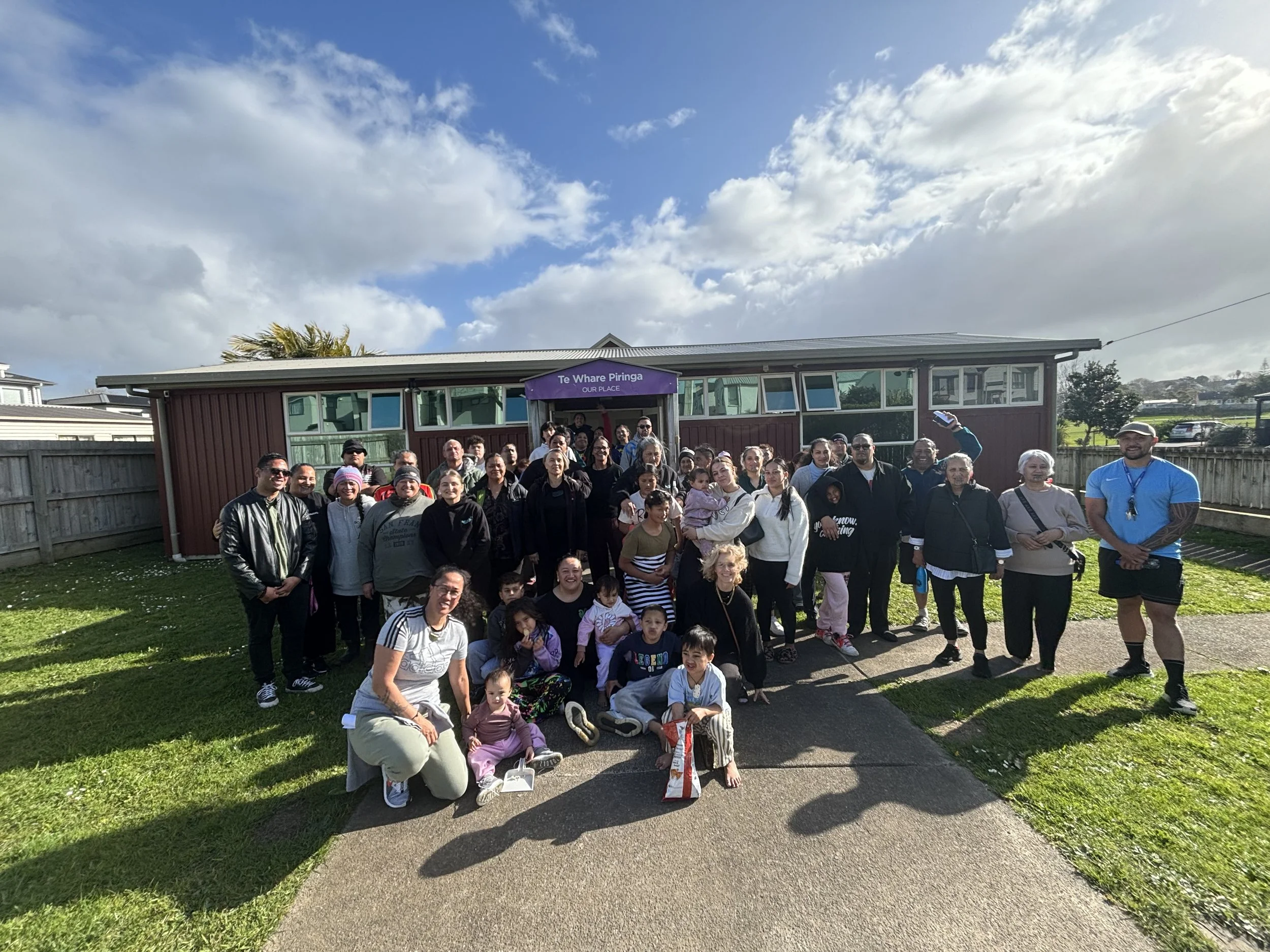Pānui #022
Nau mai, whakatau mai ki te pānui o Hepetema. Kua rewa anō te waka o tā tātou kaupapa rongonui, arā ko te Wiki o Te Reo Māori. Inā te kaha o tēnā, o tēnā te hiki i te mānuka, arā ki te whakatairanga ake i te reo Māori.
Tahuri rā ki ngā ki te Koroneihana tuatahi o te kuīni Te Arikinui Ngā wai hono i te pō, katahi rā te kauhau tuatahi ki te whakatenatena, ki te whakahihiko, ki te whakapūmau i te kotahitanga, me te mana o te iwi Māori.
Tae noa atu ki ngā rangatahi i whakakotahi atu, i tū ki te atamira ki ngā whakataetae-ā-motu 2025 o Ngā Manu Kōrero ki Whanganui e hāpai ake ana i ngā taonga o rātou mā, e rangona ana te atamai o ngā whakaaro, te wahapū me te kōunga o te reo Māori e rere ana- mei kore ake koutou!
Ka mutu, he nui ngā kaupapa huri noa i te motu, otirā ki tō tātou rohe, ko te roanga o ngā kōrero kei raro iho nei.
Hui ā tau- Ngāti Pāoa Iwi Trust AGM
The Ngāti Pāoa Iwi Trust AGM is on Saturday 30th November, 10am at Wharekawa marae be sure to save it to your calendar. Tuhia ki te rae!
Koroneihana 2025
Tēnei a Ngāti Pāoa e taunaki ana i ngā kaupapa i hua ake ai i te kauhau a te Te Arikinui Kūini Nga wai hono i te pō. Ko ia tērā e whakatenatena i a tātou ki te poipoi i te kotahitanga o te iwi Māori, koia hoki tērā e whakatūria ana i tana kaupapa Ōhanga ki te Ao.
Ngāti Pāoa stands in support to Te Arikinui Kuini Nga wai hono i te Po’s recommendations –especially her call to nurture kotahitanga as the foundation of our collective strength. We endorse her initiative Ōhanga ki te Ao, the economic summit she proposes, as an important step in creating opportunities for iwi Māori to act powerfully and with self-determination. We also affirm her vision for mana motuhake, tino rangatiratanga, and Māori being defined not by conflict but through everyday practice.
Among those who gathered was Alicia Ushaw, uri o Ngāti Pāoa, who travelled to Koroneihana alongside her māmā Emma Ushaw
. Alicia shared, “The highlight was definitely Te Arikinui’s speech. The way she spoke about carrying on her legacy, cracking some jokes, having a laugh, and then her poi – ā, i tuku i te katoa o tana kōrero i roto i te reo Māori, i harikoa katoa tōku ngākau! Honestly, she just felt like the right person to be our kuīni. As a wahine and a rangatahi, that was inspiring.”
While at Koroneihana, her and cousin Chase did a live interview for Ngā Iwi FM – i tino pai tērā wheako ki a ia! She explains that the event was summed up that whakatauākī: “Ka pū te ruha, ka hao te rangatahi.” Our kuia and koroua have shown the way, and now it rests with us as rangatahi.
Te Korowai Aroha- Series 2
We kicked off the second series of Te Korowai Aroha in mid august following another full registration! We were lucky to spend the night at Te Poho o Tāmaki Marae where we were able to meet together for the first time. This wānanga marked the beginning of a new journey for the wāhine where we engaged in whanaungatanga, learnt some whakapapa Pāoa and started learning about atua wāhine. The wānanga was well received by our wāhine and we are excited to meet again soon in late September for another wānanga looking at the mana of whare tangata and how we can navigate the different challenges and journeys regarding īkura and ruahinetanga.
Our current intake is full but if you would like to put your name forward for a possible upcoming series, please register here.
Pāorooro ki Pāremata
Me he korokoro tūī!
Tēnā rawa atu koutou i tae mai ki te wānanga waiata/haka i tū ai i te wiki tuatahi o Hepetema! Thanking everyone who attended the wānanga waiata and haka in early September. I kī katoa te whare i ngā reo pārekareka me ngā manu tīoriori o Ngāti Pāoa! The house was full of the pleasant voices and beautiful songbirds of Ngāti Pāoa!
After months of online zoom sessions, we were finally able to meet in person and put all of our practice to use. It was a beautiful day for our whānau to come together and enjoy the beautiful items of Pāoa and Hauraki whānui. We are well prepped with waiata and haka for the upcoming settlement down in Pōneke in November. Our second wānanga waiata will be held on Sunday 5th October at Te Whare Piringa, please see the Facebook group for all details
For all communications regarding Pāorooro ki Pāremata, please refer to the Facebook group.
A wānanga for Tāne of Ngāti Pāoa: Te Aka Matua o Tāwhaki
Piki mai, kake mai i Te Aka Matua o Tāwhaki
We are excited to announce a long awaited kaupapa for our tāne!
Come and embark on a powerful journey guided by the wisdom of Atua Māori. Te Aka Matua o Tāwhaki invites tāne of Ngāti Pāoa to connect with their ancestral roots, strengthen cultural identity, and tap into the transformative potential.
About the wānanga:
Let us enter Te Kura Wānanga of karakia, pūrākau, kairākau, haka, toi and hands-on experiences. Embark on this journey to deepen our connection to Atua Māori, whenua, tūpuna, and the natural world within and around us. Let's explore this shared path of growth and empowerment as we honour the legacy of Ngāti Pāoa together.
We will be holding a one-off overnight wānanga in November 2025, facilitated by Tūrei Peeke, to launch the beginning of this kaupapa in the hopes that we can deliver a wānanga series in the near future similar to Te Korowai Aroha, our kaupapa wānanga for our wāhine that is currently being delivered.
Keep your eyes peeled on your email inboxes for the registration email which will be coming out Monday 29th September to all Ngāti Pāoa Iwi Trust beneficiaries.
Ko te kai a te rangatira, he kōrero:
Below is the statement of association for Kiripaka Wildlife Scenic Reserve, taken from the Ngāti Pāoa Deed of Settlement (Attachments Schedule). The statement of association is referred to in the ‘statutory acknowledgement’ the Crown is providing Ngāti Pāoa over the reserve. The kōrero is written by the late Morehu Wilson.
Kiripaka Wildlife Scenic Reserve (OTS-403-268)
The Kiripaka Wildlife Scenic Reserve (523.5 hectares) is an important area for the descendants of Pāoa as it holds significant traditional, spiritual, physical, customary and holistic values.
Te Kiripaka is located near the north western reaches of the summit to the sacred mountain
Kohukohunui, the highest peak within the mountainous range of Hūnua, and skirts the northern
border of the East Wairoa Raupatu Block. Te Kiripaka is owned by the Crown, vested in the
Department of Conservation and managed by Auckland Council, and lies within the Ōrere Taupo Native Land Court Block.
Ngāti Pāoa’s association with Te Kiripaka stemmed from the slaying of Ngaromānia, a Ngāti Pāoa ancestor. Ngāti Pāoa tradition records that Ngaromānia was at times a turbulent and arrogant man who levied heavy demands upon all travellers passing up and down the Tāmaki River, and sometimes attacked them without just cause. As a result of Ngaromānia’s actions, people became disgruntled and planned to lure him in to a trap where he would be slain. Ngaromānia was invited to a pā site at Ōrere. When Ngaromānia arrived at this village, he was captured and killed.
Ngāti Pāoa had just cause to avenge Ngaromānia’s death, and it was Te Mahia (Ngaromānia’s nephew and the son of Tokohia and Ramaaro of Ngāti Pāoa) who led the attack on the village at Ōrere. Tokohia and Ngaromānia were brothers and they participated in previous battles, alongside Pāoa’s grandsons, Manawa and Taukiri, with another section of Te Uri o Pou as a result of the deaths of Ngaromānia’s father, Te Whiringa, and his uncle, Te Kapu. These battles contributed to the conquest and allocation of lands between Ngāti Pāoa and a neighbouring iwi.
Te Mahia accepted a request to aid a neighbouring chief of the village at Ōrere to kill the chief
responsible for Ngaromānia’s death. The neighbouring chief and the chief responsible for
Ngaromānia’s death had quarrelled about land issues and unwelcome advances by the latter on the former’s wife. Te Mahia both harboured resentment and sought retribution in killing the chief who had previously slain his uncle, Ngaromānia. Te Mahia succeeded in obtaining this retribution, and the remnants of the slain chief’s people, who survived, including his son, fled the district with the intention of joining their relatives in the north.
The slain chief’s people returned to Tāmaki Makaurau with their northern relatives. After a series of battles they soon found Te Mahia; he was killed, his body mutilated, and his body parts hung in a great Karaka tree. His jawbone was unceremoniously removed and taken back north to be used for fishing practices. There is a river named Te Hī Kauwae (to fish with a jawbone), in reference to the skeletal remains removed from Te Mahia’s body.
This incident only served to incense Ngāti Pāoa and increase the violence that would befall both people of the north and Ngāti Pāoa. Te Mahia’s sons Te Haupa, Te Waero and Pōkai had now adopted the name of Te Uri Karaka (the Karaka descendants) in reference to their father’s body parts hung in the great Karaka tree. They were to exact a bloody retribution that would have severe consequences for both parties. Te Haupa, te Ūpoko Ariki Toihau o Ngāti Pāoa (the great chief of Ngāti Pāoa), would rally his relatives within the Marutūāhu Confederation and carry out long-range warfare to avenge the death of his father and two other notable Marutūāhu chiefs, Pōkere of Ngaati Whanaunga and Hauāuru of Ngāti Maru, who had recently been killed by northern raiders.
Meanwhile, feeling remorse for Te Mahia’s death as a result of his request to seek Te Mahia’s
assistance in killing, the chief who had requested Te Mahia’s assistance was moved to gift further lands to Te Mahia’s descendants who had adopted the name of Te Uri Karaka. Te Haupa and his brothers, having moved to the area, now occupied important strategic coastal pā.
The boundaries of the lands offered were later consolidated and agreed on by Wiremu Te Rauroha, the grandson of Te Haupa and great grandson of Te Mahia, and a leading member of another iwi. Te Kiripaka was identified as lying within those boundaries.
Ngāti Pāoa fashioned four waka from trees located within the Te Kiripaka land block, thereby
celebrating their marine prowess while also strengthening and reaffirming their spiritual, physical, cultural and traditional connection with Te Kiripaka.












